Getting romantic again: Reviving the art of love
HIDE CAPTION
- A many-splendoured thing
- Love in its many varieties may be the most frequent subject of artists throughout history. Gerhard Richter’s Two Couples from 1966 captures an idyllic scene. (Corbis)
For centuries, love was one of the great subjects of Western art. Out of favour for a period, art about romantic love is making a comeback, says Jason Farago.
Love is a paradox. Its force, argues the philosopher Michael Hardt, derives from contradiction. On the one hand, love is an attachment: the strongest and most unshakeable relationship you can have with another person. On the other, love is an explosion: an event that marks you for life, an irrevocable division between then and now. Love is the ultimate union and the ultimate rupture at once.
Love, for all its mystery, has of course been one of the great subjects of Western art, and its many varieties – courtly love, erotic love, filial love, divine love – have been depicted through Greco-Roman allegory, Romantic iconography or harsh realism. Until recently, that is. Love is still the principle obsession of songwriters and filmmakers, but among artists love went somewhat out of fashion in the central decades of the 20th Century. Until recently, artists have seemed more comfortable investigating sex, and the social and political dimensions of the body, than the disruptive, unpredictable phenomenon of love. Yet today love is back on view in the galleries, and often in disarmingly candid guises.
Great art about love, in all its messiness and splendour, requires an artist who is willing to be vulnerable and to risk embarrassment – an artist like Sophie Calle. The French conceptual photographer, currently the subject of a fine show at the Isabella Stewart Gardner Museum in Boston, Massachusetts, has chronicled passion, heartbreak and recovery in intensely personal exhibitions and books, some of which are so emotionally naked that looking at them can feel like an invasion. Take Care of Yourself (2007), her greatest work, began when she received a breakup email from her boyfriend, identified only as ‘X’ in the project. The tone of the email was cold and mechanical, and Calle couldn’t make sense of it, so she showed the text to a close friend and asked her to explain it. Then she showed it to another woman, and another: 107 women in total, each of whom she photographed and then asked to interpret the letter according to the practices of her profession. Some of the viewers were fellow artists. The singers Feist and Camille wrote songs about X, while actresses Jeanne Moreau and Miranda Richardson performed the letter and Laurie Anderson turned it into a multimedia performance. Other interpreters included a professor of moral philosophy, an expert on women’s rights at the United Nations, a Talmudic scholar, an accountant, a psychic and a clown. None of the interpretations offer any clarity on their own, but together, they comprise a stunning, salutary effort to make heartbreak bearable, and to make love public.
Calle’s work stands as a reminder that art with a conceptual bent – so often thought of as drily intellectual or distantly ironic – is actually just as capable of expressing the intensity of love as more customary representational modes. Few artists of the last 30 years found a more moving vocabulary for the expression of love than Félix González-Torres, the late Cuban-American artist who imbued usually cool minimal and conceptual practices with burning emotion. His Untitled (Perfect Lovers), from 1991, consists of two battery-operated clocks that hang side by side, ticking away in sync. The ticking suggests an eternal, perpetual love that will go on long after the beholder leaves the gallery. It also reminds that truly eternal love is impossible, and inevitable mechanical glitches mean that the clocks eventually fall out of registration. The fact that the clocks look identical is significant – González-Torres led the way in putting gay issues, including HIV/Aids, front and centre in US museums. Love and loss, towards the end of González-Torres’s career, became the generator for some of the most beautiful and moving artworks of the age: piles of sweets that weighed the same as his dead lover, or paired strings of lightbulbs that intertwined and shone together.
A beating heart
González-Torres taught a generation of artists that ambitious art needn’t be emotionless, and his legacy endures. Romanticism, so out of fashion for much of the 20th Century, has had a notable comeback recently – the Schirn in Frankfurt devoted an exhibition to the subject a few years back – and many artists today are much more comfortable talking about love than previous generations were. Ragnar Kjartansson, an Icelandic artist whose work will be seen at New York’s New Museum this spring, is one of the best of these new romantics; his art, which often takes the form of super-long musical performances, aches with the glory of love. For Bliss(2011), he and a group of singers performed the final five minutes of Mozart’s Marriage of Figaro, in which Count Almaviva begs for and wins forgiveness from his wronged wife, with a full orchestra and traditional Rococo costume. And then they performed it again, and again, and kept performing it for 12 straight hours; the singers went hoarse, the musicians’ hands grew calloused and everyone needed to hydrate in order to keep going. As it went on into the night, not just the musicians but the audience became invested in an endurance contest, an effort to celebrate love at the limits of experience. Indeed opera, with its unabashed emotions, has been a key tool for contemporary artists looking at love – Yinka Shonibare recently restaged La Traviata, while Bill Viola’s Tristan und Isolde took the old Wagnerian theme of redemption through love and revived it through high-definition video.
Taking love seriously in art doesn’t have to mean walking away from formalism. Gerhard Richter, the great interrogator of painting, can produce a picture of lovers in the forest that feels as cold as a tomb, and then also paint his wife with such loving delicacy that it recalls Vermeer. Love needn’t negate history: Yang Fudong, a Shanghai-based video artist whose work is now on view at the Met in New York, makes powerful love stories that are also investigations of China’s breakneck modernisation. Nor does an interest in love have to mean a fear of politics, or a turning away from social issues. The photographer Zanele Muholi has been producing extraordinary portraits of lesbians in South Africa that are at once political activism and tenderly personal snapshots.
But if there’s one artist who best expresses the paradoxical power of love, its simultaneous nature as both unshakable bond and unstoppable rupture, it is Sharon Hayes. For the New York-based artist, who was the subject of an excellent mid-career retrospective at the city’s Whitney Museum of American Art in 2012, love is the material that fuels politics and urban life, and love offers a chance not only to bind together individuals but the whole world. Hayes’s art often takes the form of speeches, and in I March in the Parade of Liberty But As Long As I Love You I’m Not Free, she took to the streets of her city with a bullhorn, reciting a text that inserted gay liberation slogans, newspaper reportage and Oscar Wilde’s writings into an aching, desperately romantic plea for a lost lover. Love is private and public at once, Hayes insists: she can’t live without you; we can’t live without each other.

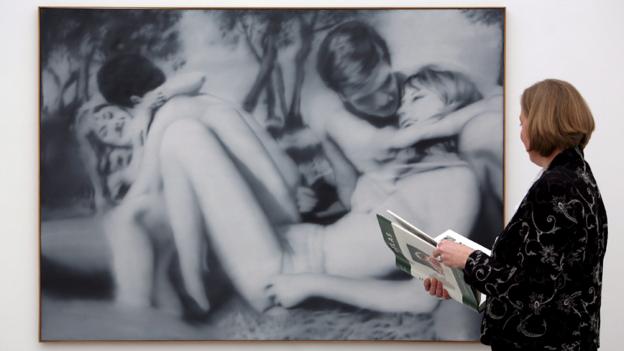

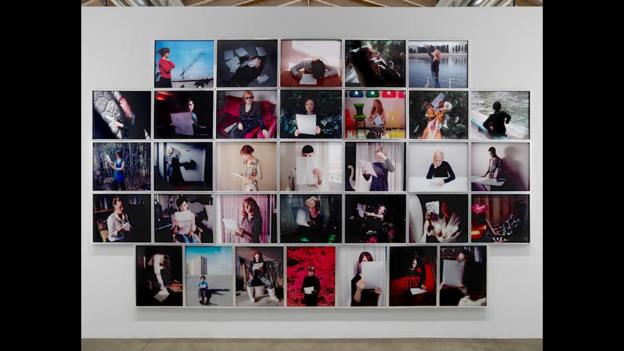
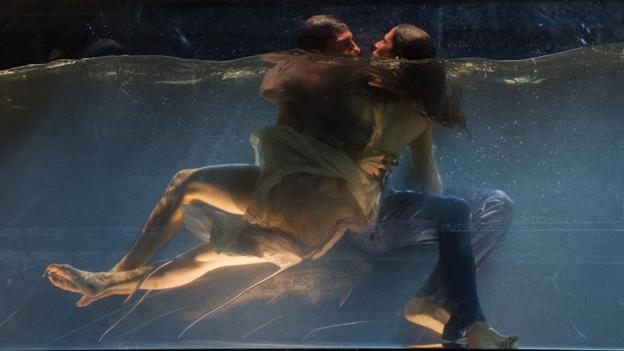

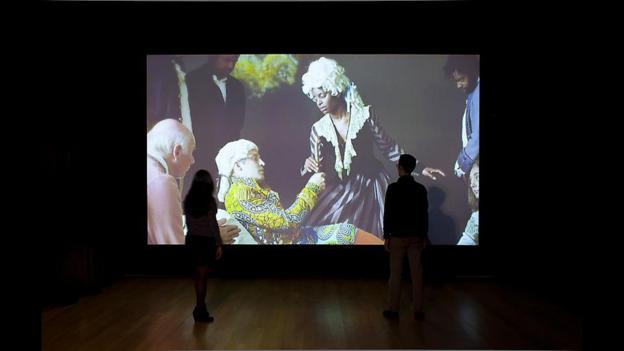
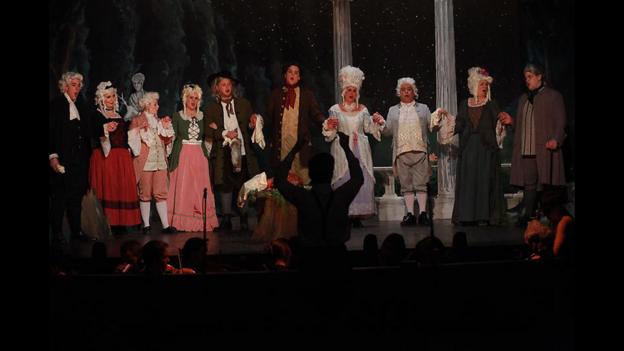

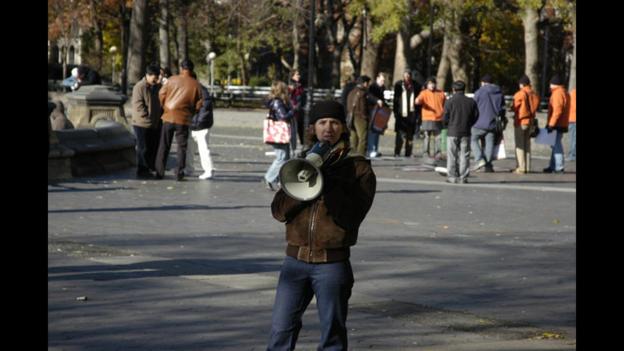















댓글 없음:
댓글 쓰기
참고: 블로그의 회원만 댓글을 작성할 수 있습니다.